Code: BLKCYB
Home / DIY: Cheap Indoor Grow Setup a Low Budget Grow Room
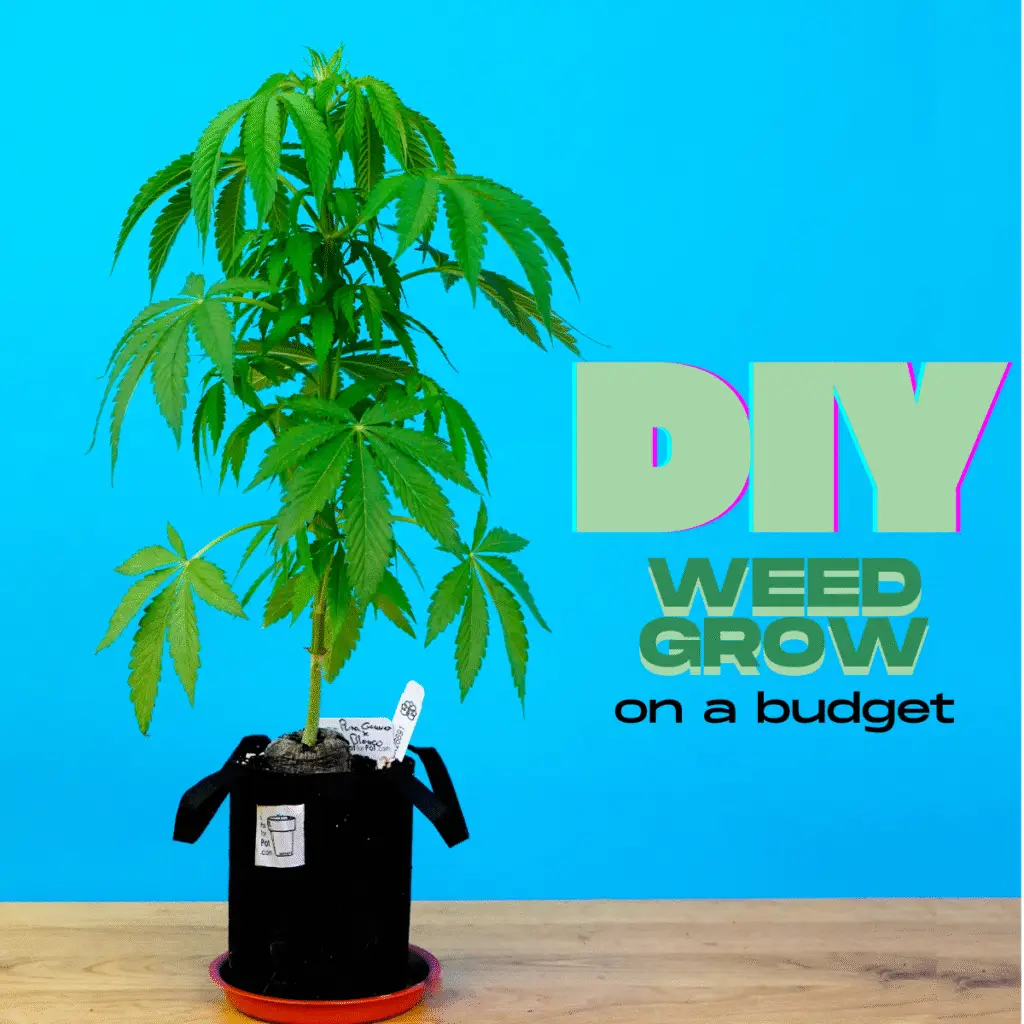
Contrary to popular belief, learning how to grow weed cheaply at home can be very easy and budget-friendly. Don’t buy into the hype that you need a complicated science experiment that winds up costing more than your first car. This straightforward, sustainable step-by-step grow guide will explain how to grow marijuana on the cheap indoors and hassle-free. We have taught thousands of people how to grow on a small scale using the most straightforward methodology that grows buds as good as the next. The beauty of the cannabis plant is that you don’t need to be a seasoned grower to achieve a decent harvest at home. Let’s be honest about stereotypes for a second: it’s called weed for a reason—it grows like one, and the plant does most of the work. All you need to do is water it.
We want every cannabis user to cultivate a marijuana plant for personal use as though it were any other houseplant. Cannabis is a straightforward plant to grow—it grows quickly, smells terrific, and adapts to many different environments and growing media. Making it actually a straightforward plant to grow. Our indoor grow for beginners can be set up for under $100 using quality soil and just water. Follow along to learn how to grow impressive buds that you can use for smoking, edibles, or making canna oils. Cannabis is a plant everyone will quickly fall in love with growing, and it’s our job to help turn black thumbs green.
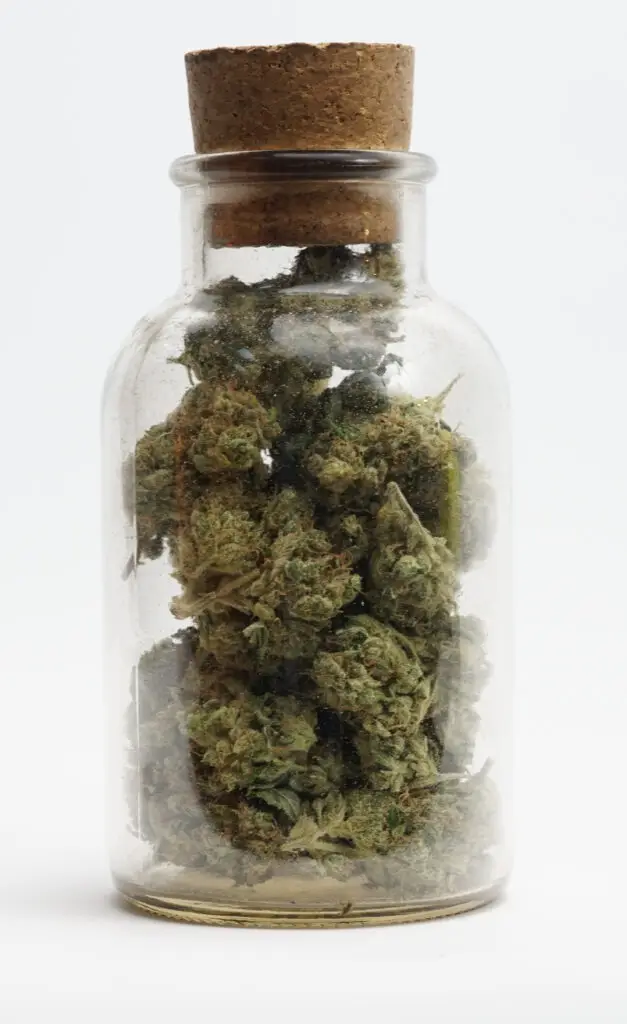
Cannabis tastes better when freshly harvested at home, and you wind up with more than you need. We ask our customers why they started growing, and it’s nearly a tie between people wanting to save money by controlling their own supply and those who enjoy learning how to grow cannabis. What they find out is that not only is it super easy and fun to grow. Also, the cannabis you grow yourself is hands down the best you’re going to consume.
We have repeatedly proven that growing cannabis for beginners can be easy and affordable. Cannabis is far too expensive compared to how cheaply it can be grown at home. Historically, marijuana was expensive because it was illegal, and the risk had to be worth the reward. In America today, legal marijuana remains costly because cannabis companies face extremely high taxes and regulations.
Our goal is for you to become weed independent—only purchasing cannabis when you want to try something new, not because you’ve run out. Our journey began in medical cannabis, where patients often consumed large amounts. Below, we’ll discuss how to achieve this affordably with a budget indoor grow setup, without needing a grow tent or incurring a high electricity bill.
For first-time growers, we recommend spending as little as possible and enjoying the process of learning to grow your first cannabis plant. There is very little difference in the quality of cannabis grown in a $10,000 grow room vs a $100 grow setup. The plant is doing all the work. All the growers need to do is not screw it up, and the plant will produce the best buds it genetically can. Whether you plan to grow indoors using a closet, single-plant grow box, grow tent, or a $100 budget grow room, you can use our grow system and cannabis soil recipe to make growing simple and striaght forward.
It is the same as asking “how long is a piece of string?” There is no set answer to this question as it depends on many variables, such as plant type, pot size, genetics, plant age, and health. Cannabis plants can yeild anywhere from a few grams up to over 10 pounds when grown for a full year. Growing cannabis indoors, high restrictions keep the plant smaller so cannabis plants are typically kept small, as in under 4 or 5 feet.
A healthy indoor cannabis plant can be expected to yeild around 1/2oz to 1oz per sqft of canopy space as a rough guide. The average cannabis plant yields around 1oz to 6 oz when inside a grow tent. The whole idea of growing cannabis at home is making your medicine more affordable, so the less you spend on your setup and monthly bills. The more you make from your harvest. A few ounces is a lot of buds for one person, espically when you can just grow some more.
Not a whole lot to get good results. Whether you’re a beginner or a seasoned stealth grower, everyone needs the same core ingredients and elements for any size cannabis grow. It can be boiled down to the following: a space, a light source, grow media, and water.
Our suggestions a simple DIY grow setup are based on experience growing hundreds of cannabis plants and teaching thousands of learners using our grow kit, a Pot for Pot. The key elements of our simple methodology can be broken down into the following categories and done on a wide rage of budgets.
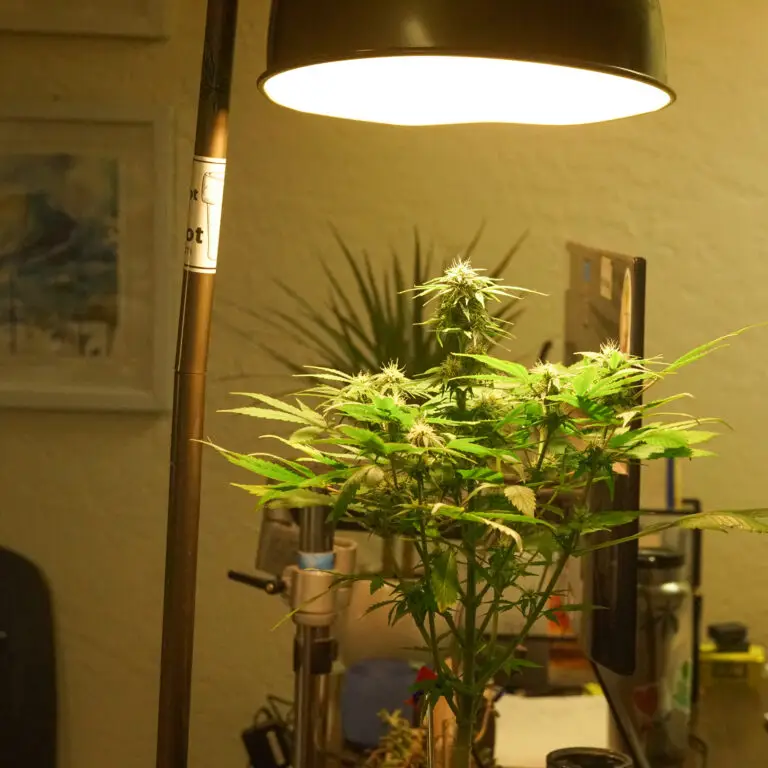
Those are the bare bones of growing weed cheaply! How much should you allocate in your budget? The cheapest grows can be done for around $100, with the average cost to grow cannabis about $300, including your indoor grow’s electricity bill. Belo, we are going to go into a deeper dive of how to grow your own cannabis and the cheapest ways possible of getting the essential ingredients gathered so you can start your journey.
Of course, we also have our complete grow kit. Packed inside the box is everything you need to start growing indoors with nothing but a desk lamp and a bright window. Included in the kit are all the other accessories that can help produce the best marijuana yield possible and aid with clean-up, including a watering can, spray bottle, trimming scissors, and pest prevention. This can be an expensive toolkit to put together on your own, and mixing your own soil is a back-breaking task. You can check out our complete grow kits at a Pot for Pot to save money as a new grower. We have everything you need to grow cannabis indoors cheaply.
When growing cannabis indoors, the plant size is kept small compared to outdoors. This is done by either growing an autoflowering strain or by triggering the plant’s flowering phase when it’s reached the desired vegetative size. As we mentioned previously, if this is your first grow, start with autoflowering cannabis to make sure your plant stays small and to reduce the chance of making any mistakes.
The amount of space a single cannabis plant needs depends on several factors, including the strain, the growing method, and how long it’s kept in the vegetative state. A general rule of thumb is to allocate a minimum of one square foot per plant, but this can increase to 2 to 4 square feet per plant during the flowering stage.
The cheapest way to start growing cannabis is to hang a light in the corner of a room and place your autoflowering plant under it, growing in super soil and just watering it. You can get a bigger yeild by moving your plant into the sun whenever possible, even if only for a few hours. Both your plant and its buds will benefit, and your electric bill will be lower. Just remember to bring it back indoors at night or when it’s cold.
If you don’t have the budget for a grow tent, don’t let that stop you. Autoflowering cannabis grows just as well in the corner of a room or closet that has become your “grow room.” An advantage to this method is that it keeps the environment more balanced, as you are not heating and cooling a small grow tent. Instead, your room stays comfortable for the plant because the heat from the grow light dissipates throughout the house, potentially lowering your heating bill during the winter months. This approach only works with autoflowers; you don’t need to worry about light and dark cycles.
Cannabis plants are called weed for a reason; they grow like one. Just becuase you see people with $10,000 grow rooms, the reality is that the cannabis plants my uncle harvested with a $100 grow light and a whole lot of love come out just as good. It’s not the grow room that’s doing the growing; it is the plant. Getting good seeds and winning the genetic lottery are the two biggest ingredients to growing great cannabis buds.
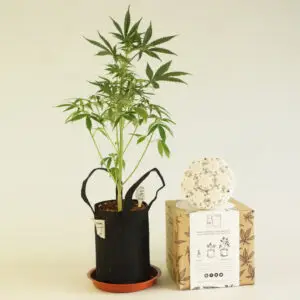
The overall size of your grow space will be determined by the number of plants you plan to cultivate and your chosen growing method. For home growers, a grow tent is a popular choice because it keeps the plants out of plain sight and helps contain the odor of cannabis. However, grow tents can make it challenging to control the environment inside, since you are adding heat to a confined space.
Below are some common tent sizes and the number of plants they can accommodate:
In addition to the space for the plants themselves, you need to account for other essential components and tasks.
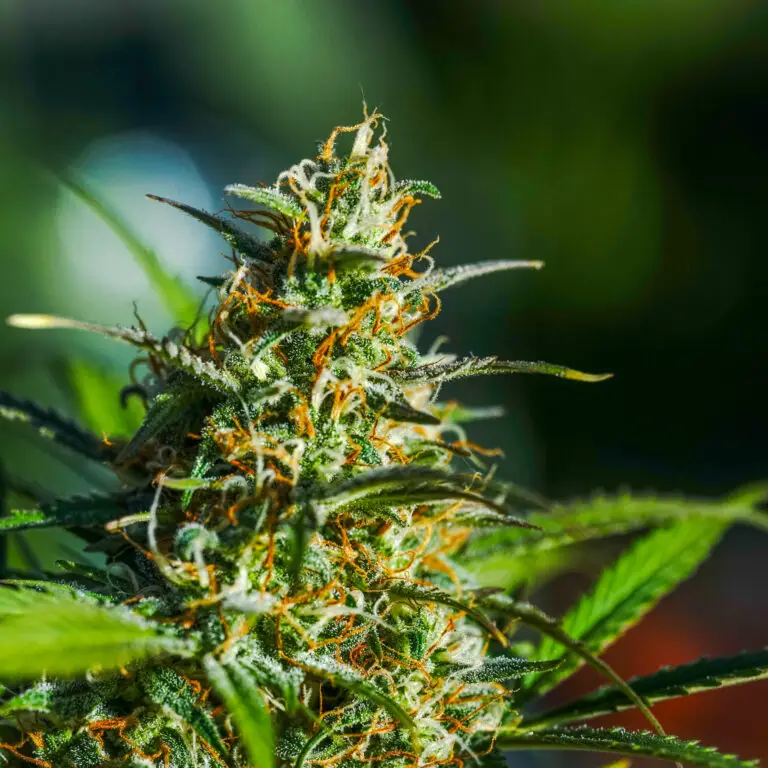
This is vital when growing photoperiod cannabis, but not necessary when growing autoflowering cannabis. Controlling the amount of light and darkness your cannabis plants receive is very important for a photoperiod cannabis plant, as it controls the vegetative stage or flowering stage. Making your grow room lightproof ensures that your marijuana plant gets the right amount of light depending on its stage of growth. Autoflowers make the processes much easier by not being sensitive to when the lights are on or off.
Your grow room needs to be lightproof for photoperiod plants because your marijuana plant needs to know when it is nighttime. So, having a totally dark grow room with no light leaks is essential. Keeping the lights on for 14 hours to 24 hours a day will keep a cannabis plant in its vegetative stage. A light cycle of 12 hours of darkness and 12 hours of light will trigger a photoperiod cannabis plant to enter the flowering stage. If your grow room isn’t lightproof, this can disrupt the plant’s growth cycle. Light leaks during the plant’s dark period can confuse the plant and disrupt its hormones.
That is why we recommend growing autoflowering cannabis plants for beginners. They do not need a specific light schedule to transition to the flowering stage. They stay under 4 feet and are equally as good as photoperiod plants. Autoflowering cannabis is the best option for a stress-free, inexpensive indoor grow room and is recommended for both first-time growers and experienced cultivators.
If you grow in a room, the air is naturally dispersed around the plant and throughout the house, making temperature management much easier. We suggest always having a fan blowing over your plant to help it grow strong branches and providing ventilation to bring in fresh air if possible. When using a grow tent inside your grow room, several additional factors come into play to keep the tent within the correct temperature and humidity range.
When growing indoors with a marijuana grow tent setup, you need a good ventilation system to control the heat produced by the grow lamps, and, if odor is a concern, to manage the smell of the plants. Grow lights give off a significant amount of heat—a 1000-watt grow light produces almost as much heat as a 1000-watt heater. In a confined space, this can quickly cause temperatures to rise and potentially damage your marijuana plants if the tent or space isn’t ventilated. As your marijuana plants grow and begin flowering, they can produce a strong odor, which may be unpleasant to roommates or houseguests. However, if you already smoke in your home regularly, one or two plants likely will not make a major difference in the overall smell.
There are several ways to address this, but one of the easiest is to install an air extractor or exhaust fan with a carbon filter. An air extractor can remove heat and odor from the grow space without venting it outdoors. The carbon filter prevents unwanted marijuana odors from escaping and attracting unwanted attention from neighbors.
Proper ventilation is also crucial for preventing mold development on marijuana plants. The process by which a plant releases water vapor is called transpiration, which occurs through the plant’s stomata. Because of this, maintaining fresh airflow is essential in your indoor grow setup. It is also important to monitor temperature and humidity so your marijuana plant has a healthy lifecycle.
Several fans are available on the market, but we recommend AC Infinity. Their fans can provide high-volume air movement. The EC Motor utilizes electronic pulses to achieve ten distinct speeds, ranging from gentle breezes for cannabis seedlings to powerful airflow for flowering. They are also compatible with smart controllers, so that you can adjust the speed from the comfort of your living room. With each component sealed to IP-44 specifications, peak performance can be maintained even in harsh environments with high humidity and temperatures.
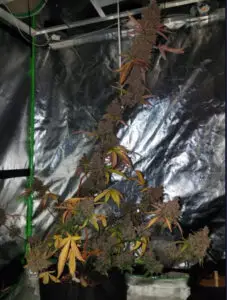
To further optimize your budget marijuana grow setup, consider adding reflective walls. Reflective surfaces amplify the lamp’s light and help increase the plant’s yield. White or metallic walls reflect more light than dark colors. While a grow tent provides an optimal growing environment, you can also line your walls with reflective materials such as mylar or even tin foil. Keep in mind that grow tents can sometimes limit plant height and available space for ventilation.
You can create your own cheap indoor grow setup using DIY materials or a grow tent. Once your room is ready, you’ll need the right equipment to give your plants the best chance of developing a strong crop.
Your plants will need water, and sooner or later, water will end up on the floor. To protect your floors, ensure your marijuana plants are placed on waterproof flooring such as tile, plastic, cement, or rubber.
If waterproofing the floor seems like too much hassle, simply use saucers under your plant pots. Check the saucers regularly for water overflow, and keep a towel handy to quickly clean up any spills.
When setting up your indoor grow, you can choose a bare-bones approach or invest in advanced equipment like AI grow room controllers, air conditioning, light timers, and ventilation fans. Both approaches can work, but if this is your first time growing, we recommend starting as simply and cheaply as possible while still aiming for great results. Indoor cannabis grows are known for high-quality buds, and that can be achieved on any budget. Remember, the plant does most of the work—the plant is “going to the gym,” not you.
If you plan to sell your product, a small investment in your grow setup can make a significant difference in your crop’s yield and ultimately earn a substantial return on investment. However, if you are like most of us and simply want to grow herb for personal use because the buds taste better and a couple of ounces is going to last you months. Then grow weed in the simplest and cheapest way possible. There is no real need to spend $1000nds to achieve the exact same result in a $200 grow setup.
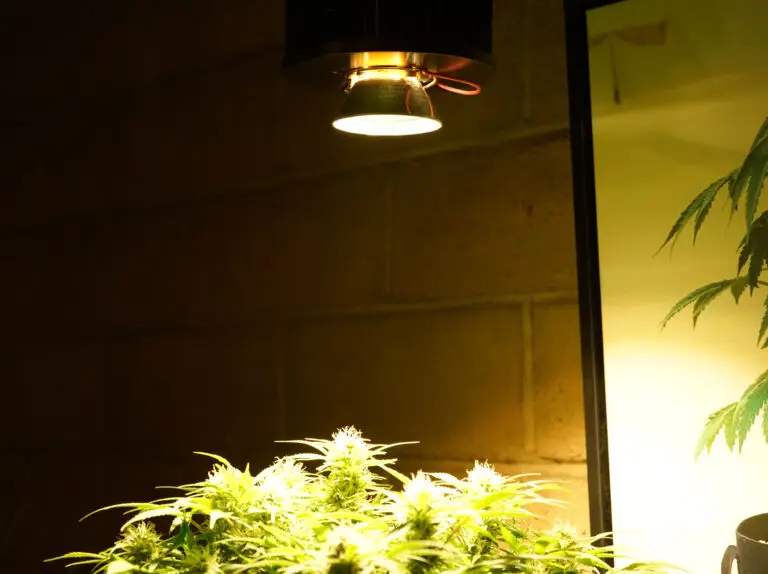
Whether you’re building a basic indoor grow setup or an advanced room, you need a grow light for healthy plant growth. Consider growing as a long-term investment, and remember that higher wattage means a higher electricity bill. For personal use, we recommend using a 400-600 watt grow light at the most. Again, top-of-the-line LEDs are not going to make your plant more potent. If you have access to direct sunlight, supplement your indoor lighting whenever possible with the sun. Nothing is more powerful—or more affordable—than the sun. It grows the healthiest and most potent cannabis.
There are several different types of grow lights to pick from.
LED grow lights have become the industry standard. They are the top choice for both professional and hobbyist cannabis growers because of their low heat output and the ability to adjust the light spectrum for each growth stage. LEDs are more energy efficient than other lighting options, resulting in lower monthly electric costs and less need for additional cooling or ventilation. There are very few disadvantages to using LEDs; some traditional growers claim HPS lights produce denser buds, but the high operating cost of HPS outweighs this benefit. Ultimately, LEDs are the best indoor grow light. When choosing an LED, consider your electricity budget, the required wattage, and the size of your grow space.
The higher the wattage of your grow light, the bigger your harvest yield will be. Think of light as the plant’s fuel—the more you provide, the faster it grows. While grow lighting is a highly debated subject, we believe that the best light for your marijuana plants is the sun. However, direct sunlight may not be an option when growing indoors or in an apartment.
Why do we recommend providing your plant with supplemental sunlight when growing indoors? First and foremost, it is a free, giant fireball in the sky! Not to mention it is a true full-spectrum light source that the plant evolved to grow under. Plants grown under sunlight have stronger immune systems and show more vigorous growth. Even if that just means pulling your plant out of the grow tent when you can, placing it in a sunny spot for a few hours a day.
The next best option after sunlight is a high-quality LED light with the correct spectrum. When growing marijuana indoors, use an LED that offers both blue and red spectra—blue is preferred during the vegetative stage, while red supports flowering. This mirrors the natural progression of sunlight from summer to fall. Our full-spectrum COB LED grow light is balanced for both stages. Some LEDs allow you to adjust the color temperature to favor blue or red, though these adjustable LEDs often have a lower lumen output per watt.
Aside from great soil and lighting, what are really the only two things you need to grow cannabis there are endless tools and gadgets that can enhance your cannabis plant’s growth or maintain the perfect environment:
All of these tools can enhance your cannabis growth, but it might not be feasible to buy all of them on a budget. And you don’t need them to start growing today. All you need is a head on your shoulders and a dash of motivation. You don’t even need a green thumb. With just a bit of sun, a basic LED light, and the corner of a room, you can enjoy the journey of harvesting your own homegrown cannabis. When you use our kit combined with auto-flowering cannabis seeds, it can accelerate your cannabis grow. The truth is, if you are one of those people who kill plants, that’s because you never had a plant worth caring about. Let the weed do the work of growing on itself.
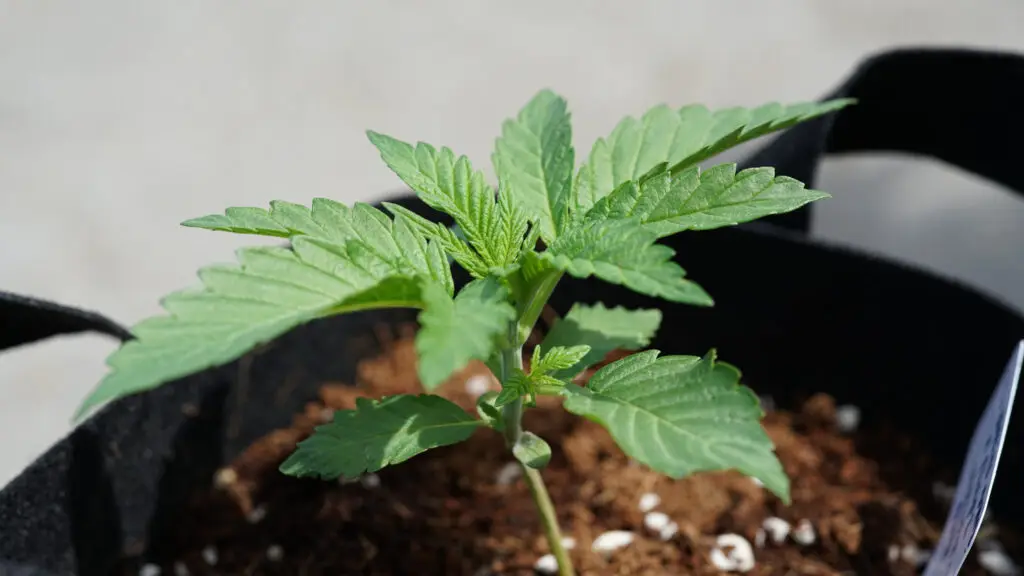
Using Super Soil makes what to feed your cannabis plants easy! Just water, and let the plant and nature do all the hard work. The best and cleanest marijuana is grown in super soil, using only natural or organic matter. The better the soil and the more light you provide, the bigger your marijuana plants will grow and the denser your buds will be. Making your own super soil at home is easy.
Our Super Soil recipe will teach you what you need to know to make your own at home.
We tailored our home grow box to include the highest-strength super soil you can formulate and everything you need to go from seed to harvesting your own organic cannabis flowers—all at a price that won’t leave you stressing over the thing that’s supposed to relax you. To make it easy, we blend over 18 ingredients into our cannabis super soil to provide all the nutrients needed to go from seed or clone to a beautiful, budding marijuana plant. Nothing beats the smell and taste of a naturally soil-grown cannabis harvest.
Also included is our Rooting Booster—a blend of beneficial bacteria and fungi that work in symbiosis with your cannabis plant’s roots to break down the soil and maximize nutrient uptake. It may seem simple, but a healthy environment makes all the difference, not to mention all the other components of our grow kit that make it easy to start growing cannabis at home.
Super soil is a highly enriched, organic growing medium designed to provide plants with all the nutrients they need from seed to harvest, eliminating the need for additional liquid fertilizers. It’s often referred to as a “just add water” growing method, making it a popular choice for growers who want a more hands-off and simplified approach.
The concept was popularized by the well-known cannabis grower Subcool, who shared a specific recipe for creating this potent soil mix. The key to super soil is that it isn’t just a potting mix; it’s a “living soil” teeming with beneficial microorganisms, fungi, and bacteria. These tiny organisms form a symbiotic relationship with the plant’s roots, slowly breaking down the organic amendments into a form the plant can easily absorb.
A typical super soil recipe involves starting with a base of organic soil, which is then heavily amended with a rich blend of ingredients. These amendments can include compost, worm castings, bat guano, bone meal, blood meal, kelp meal, and various other natural inputs. After mixing the ingredients, the soil is “cooked” or composted for several weeks to allow the microbial life to multiply and begin the breakdown process.
When it’s time to plant, the super soil is typically used as a concentrated layer at the bottom of the container, with a less-amended base soil on top. This prevents sensitive young roots from being “burned” by the high concentration of nutrients. As the plant grows, its roots extend downward to access the nutrient-rich super soil layer, providing a constant supply of food throughout its entire life cycle. The result is a more natural, flavorful, and aromatic final product without the need for complex nutrient schedules or pH adjustments.
Anyone who has gardened before knows that pest problems can inevitably arise. It doesn’t have to be expensive to manage them, though. There are several ways to prevent pest issues. Growing weed indoors, as opposed to outdoors, makes your cannabis plants less susceptible to pests, since it’s a more controlled environment. The first step is ensuring that your cannabis grow space is properly cleaned and sealed. The best way to prevent pests and diseases is to perform preventative maintenance. Keeping your grow room at ideal environmental conditions—like proper ventilation and air circulation—will help your plant resist pests and diseases.
Regular foliar sprays of neem oil are a natural preventative deterrent and are included in a Pot for Pot’s grow kits. The best time to treat a cannabis plant for pests is before they appear. Once your plant has developed its second set of leaves, start spraying it weekly with neem oil. Continue spraying your plant up until the second or third week of flowering. At that point, you can stop as the plant is nearly finished with its lifecycle.
Before introducing a new cannabis plant into your grow space, consider quarantining it in a grow tent or sectioning off part of the room to ensure it doesn’t bring in pests or diseases. If you find any pests on a cannabis plant, quarantine it immediately. It’s also vital to sterilize hand tools and instruments before moving them from the grow tent to the grow room to prevent cross-contamination. Thoroughly clean your indoor grow area between harvests and remove dead or decaying plant matter throughout the grow to help prevent pests and molds. Additionally, check your clothing for pests and contamination before entering or exiting the indoor grow setup to assist with pest and disease management.
While having a great setup can give you everything you need to become a cannabis grower, it’s still important to learn the stages of marijuana growth to look at what’s to come. The growth of marijuana plants consists of six stages. Each stage requires its own unique demands, such as different levels of light, water, and nutrients.
When starting out with growing autoflowers, the plant will go through all the same stages as a photoperiod cannabis plant would, just in a shorter time frame. Autoflowering plants take about 3 to 4 months from seed to harvest. Growers who use photoperiod seeds or strains typically take between four and eight months to maturity.
The quality of your marijuana plants depends on your knowledge of cannabis growth stages.
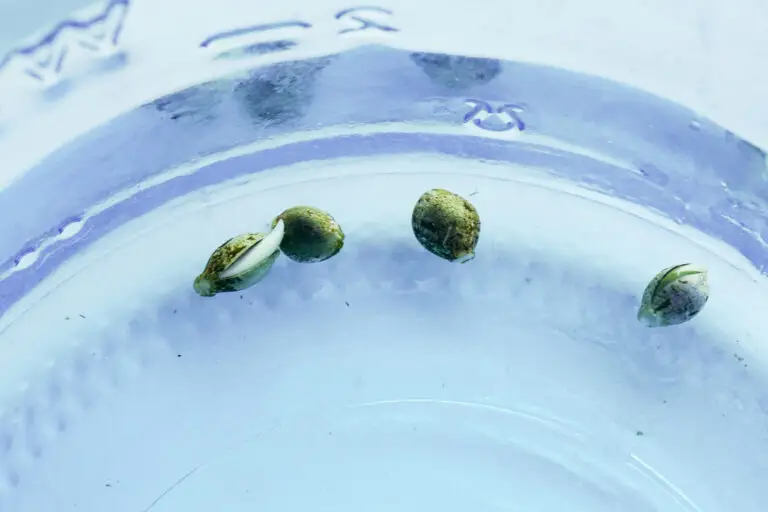
Good quality cannabis seeds from a trusted seed bank or breeder are the first step. Once you have sourced your cannabis seeds to germinate, soak them in water for 24 hours, keeping them in a dark and warm location. When soaking the seeds is complete, plant time in a Jiffy Pellet about 3/4in down. Jiffy pellets are great because they are designed to be the perfect natural environment for seeds to germinate in. We do not adhesive using paper towels to germinate seeds. This is because they can be easily damaged during transplanting, and they undergo a lot of chemical processing that can be detrimental to their seed microbiology.
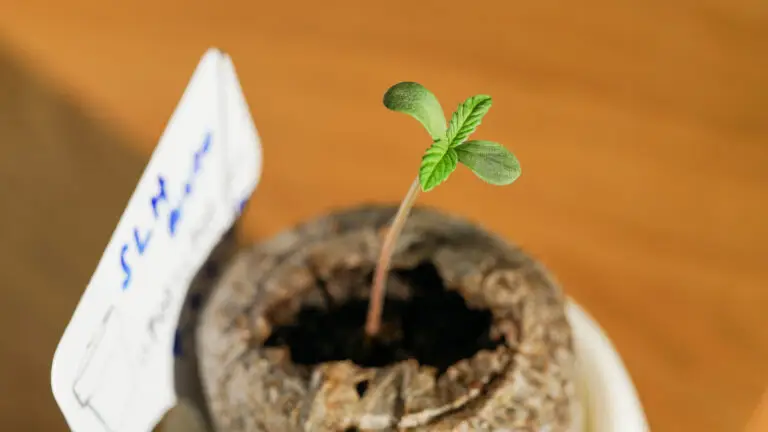
The seedling stage is perhaps the most fragile stage of growing marijuana plants. During this stage, growers expose marijuana plants to sunlight for 18 to 24 hours while making sure that the soil stays moist. Healthy seedlings will develop traditional-looking marijuana leaves that appear vibrant green in color.
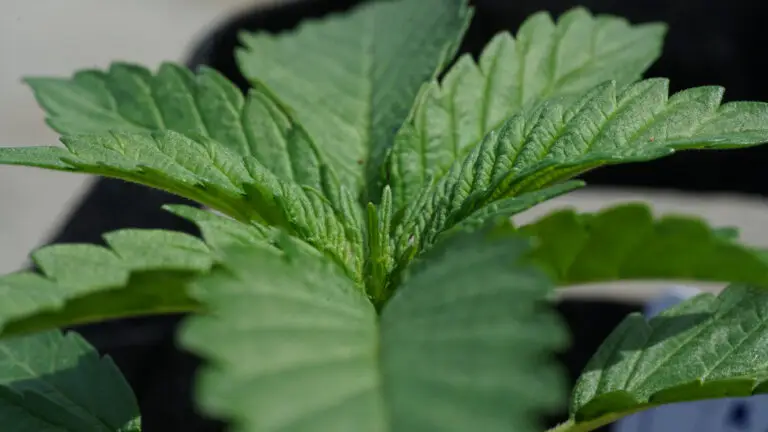
The hallmark of this phase is apit growth. Marijuana plants enter the vegetative stage once they develop seven sets of pointed leaves. During this time, growers relocate the marijuana plants to a larger pot to allow them to flourish.
During the vegetation stage, it is essential to provide chlorine-free water, keep the soil moist, not damp, and nutrients rich in nitrogen and potassium to support the plant’s development.
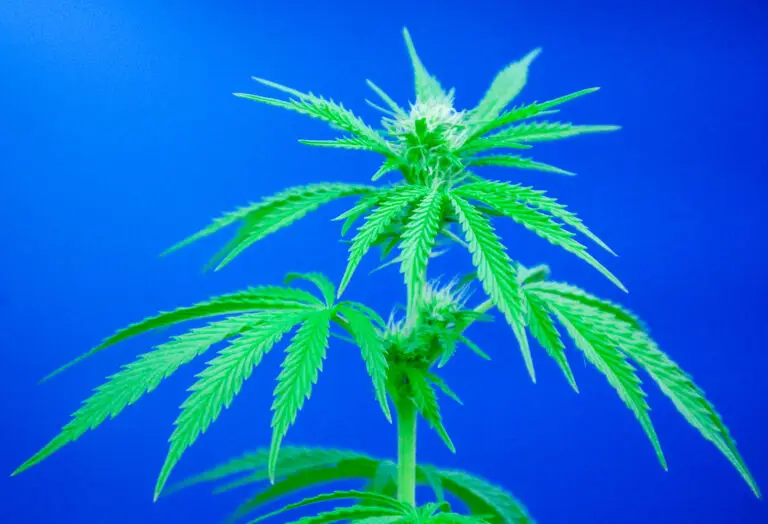
It can take anywhere between 7 to 14 days for a marijuana plant to enter its full flowering state. When it does, growers can determine the sex of the plant by looking at the nodes. Female marijuana plants have two pistils growing on the buds, while male marijuana plants have small green sacs full of pollen on the node areas.
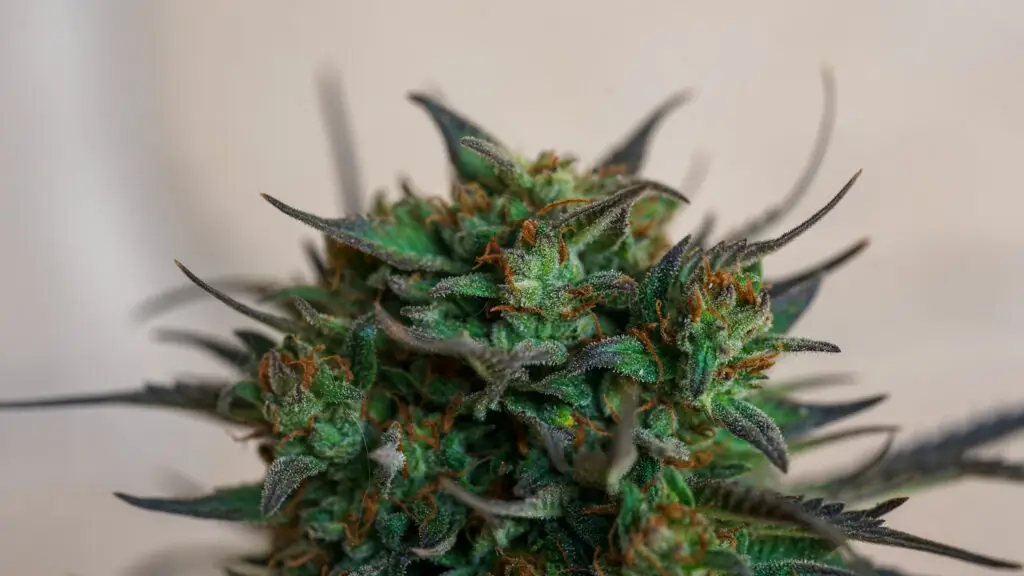
For autoflowering plants, this happens around day 60. The flowering stage occurs when plants receive less than 12 hours of sunlight per day. For marijuana plants to completely enter the flowering stage, growers keep them away from sunlight for a period of 10 to 12 hours.
Marijuana plants are ready to be harvested when the colors of the stigmas on cola buds turn from white to reddish-orange. The plants are also ready to be harvested once the trichome heads turn from transparent to milky in color, to opaque and then amber.
So in closing, whether you also might be curious about people’s perception of personal growers and their cannabis. Well, wait no longer here are the people’s opinions!
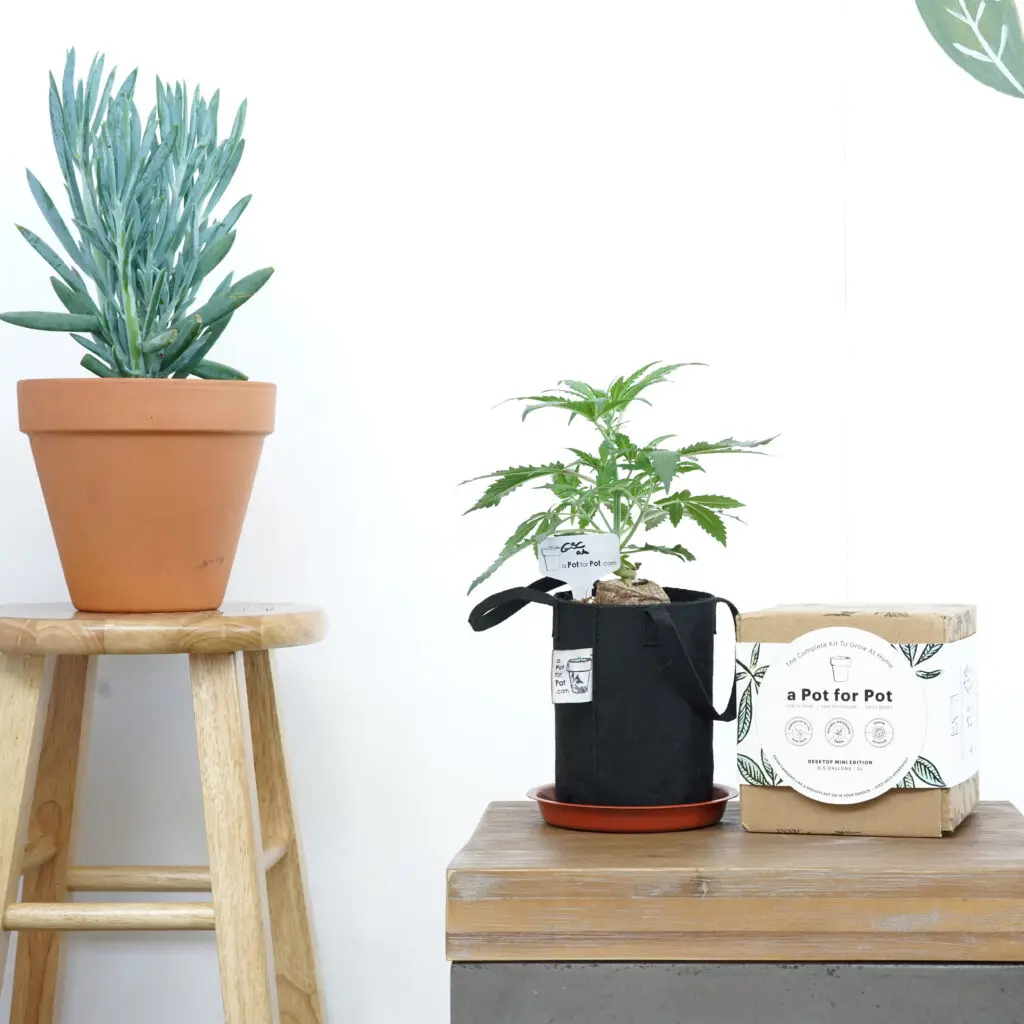
If there is one thing you can take away from this article, it is that growing cannabis indoors doesn’t need to have a high up-front cost and big monthly electricity bills. Nor is it necessary to grow cannabis hydroponically, and have a small science experiment. You can grow it just as well in soil. And no matter how many hyped up products or nutrients you throw at the plant, it will only grow as well as the genetics will allow it. That’s part of the fun of growing cannabis, each plant is going to be different and even smell different depending on the environment it has been grown in. So as you are in your planning stages of getting your grow going, let us leave you with this wise proverb: The best fertilizer is the gardener’s shadow.
No doubt. Quality homegrown marijuana can be better for you than most products you can buy from dispensaries because you control what your plants are fed and what gets sprayed on them. It’s also fresher, becuase of that will have more smell and flavor. Having said that, some dispensaries have high-tech grower systems that allow them to create marijuana plants that carry more flavors and give different highs, but some dispensary weed is full of pesticides and pests. Buyer beware.
The cost of having a small to medium personal grow will really depend on your setup. However, a good baseline is anywhere between $300 to $500. The cost would likely go higher if you add more equipment, such as grow lights. Also factor in the added monthly increase in your electricity bill when growing inside.
Yes, you can. However, the cost of growing cannabis seeds, and any other plants for that matter, from start to finish using a hydroponic system can be incredibly expensive.
The cost would depend on your setup. Some factors to consider include electricity, light fixtures, space rental, water, nutrients, and CO2. One can expect to spend around $3,500 to bring marijuana plants from seed to harvest. That’s why we suggest growing in soil if it is your first time or for personal consumption.
Aeroponics is a great way to grow high-quality marijuana at home. It’s the first way I learned how to grow, so I am in the expert position to tell you to keep it simple when you first start out. That said, you should expect to shell out at least up to $1,000 for a starter kit and thousands more if you want NASA level gear.
For sure, if you keep it simple and get good results, it’s a win. Investing in an indoor garden is worth it because you can produce an array of different marijuana strains and save money doing it. Self-sufficiency is not only a money saver but also a big confidence booster. Learning how to grow is a skill every stoner or gardener should have.
Indoor grow tents are a worthy investment if you want a dedicated space for your plants or if you have pests and pet hair in your home, which can be detrimental to the growth of your crop. Weed grow tents, specifically, can greatly reduce the light and odor that leaks out from the garden and into your home. It’s also a great option if you want to grow weed discreetly. With that said, they can also make it harder to control the temperature, and they have no natural predators when pests get in. If you can grow outside in the summer and indoors in the winter.
Smart gardens make gardening incredibly low maintenance. It’s best to invest in one if you constantly find yourself without enough time to monitor your crops. Smart Gardens are equipped with the technology needed to make sure that your garden has enough water for weeks and enough lighting to help the plants grow regularly and evenly. They work great for herbs and veggies that stay short, but are not the best fit for growing cannabis that needs several feet of canopy space.
There are several steps that you need to take if you want to set up a grow room and raise plants and weeds indoors. If you’re new to indoor gardening, we suggest sticking to the basics. The steps you need to take to build an indoor growing system include finding a suitable space to set up your garden, deciding how to configure your space, ensuring your setup will get good light coverage, and setting up a suitable ventilation/ air circulation system. Again keeping it simiple and cheap is the best way to grow cannabis profitably.
If you’re thinking of setting up an indoor garden but can’t break the bank in the process, don’t be discouraged. It is possible to build a space as an indoor grower without spending more than $200. Keep in mind, however, that the budget will only afford you the necessities to grow plants indoors. You can upgrade your garden later on. The most important thing is to get your grow going for as little money as possible. Once you have gotten a greener thumb then you can start to spend money on more equipment.
The most basic items you need for your indoor grower include a grow light, a planting medium like Superb Soil, and a pot. Once you’re ready to upgrade your indoor grower, you can purchase a ventilation system, carbon filters, reflective walls, and grow tents.
To grow indoors you need soil, pots, seeds to grow, water, and light. That’s it. However, there are a number of additional things that you should consider purchasing to ensure a good yield. Basics include high powered grow lights, fans, temperature and humidity controls, and grow systems. Then there’s extras including racking stations, trimming tables, storage, drying equipment, irrigation systems, and various additional bells and whistles.
There are many types of indoor gardening. There is soil-based, aeroponics, and hydroponic gardening. All are effective ways of growing and nurturing a wide variety of edible plants all year round. Indoor gardening can also be used to grow weed plants.
An indoor grower can grow vegetables, herbs, flowers, weeds, and other types of plants inside your home. Indoor grow systems utilize a range of technology and scientific methods to help you get the most yield of the highest quality..
There are tons of fantastic products, tools, supplies, and books that could help you through the process of indoor gardening. Some specialty products include a glass terrarium, a four-tier mini greenhouse, a glass cloche with base, non-stick pruning shears, a tabletop portable potting tray, a soil moisture gauge, bonsai scissors
Choosing the best wall covering for your indoor grow room can make a significant difference in the yield you get. If you’re on a budget, painting the walls of your indoor grower with flat or matte white paint can help reflect the light without creating any unnecessary hot spots.
If you have a little more to spend, consider lining your indoor grow room with Mylar. Developed by NASA, Mylar is a synthetic and reflective covering designed to reflect between 90% to 98% of your indoor light source. That being said, Mylar can pick up dirt, which decreases its ability to reflect light.

Learn how to cultivate marijuana. Find the best marijuana growing advice for seed germination, cloning, pruning, trimming, and curing to help maximize your yields.
$79.95
share this with your tribe